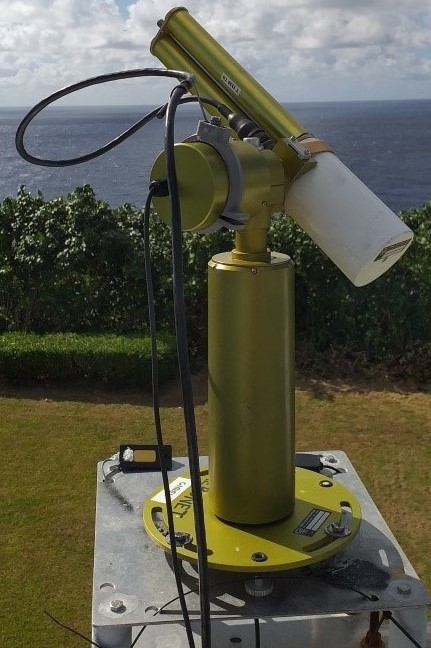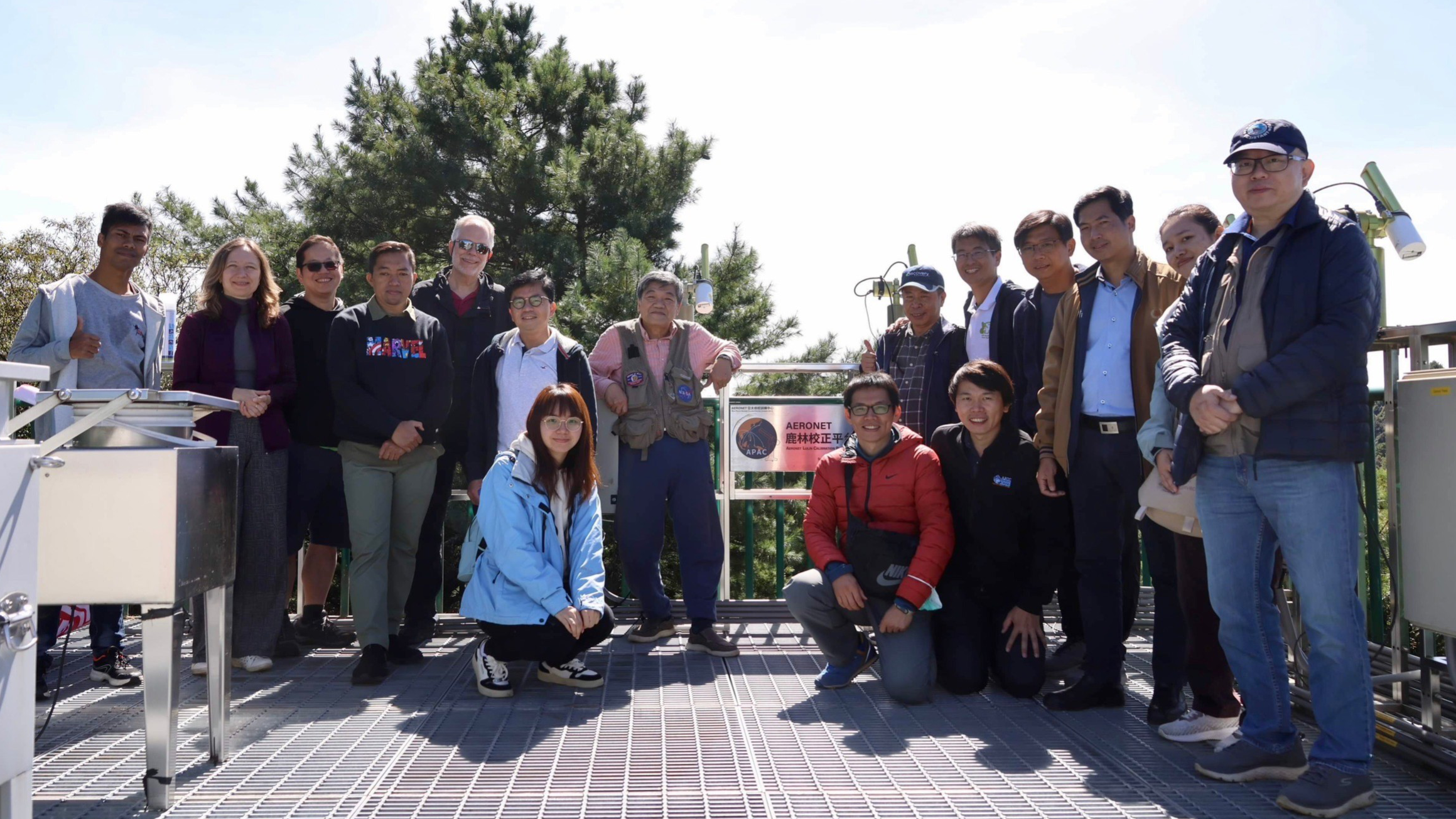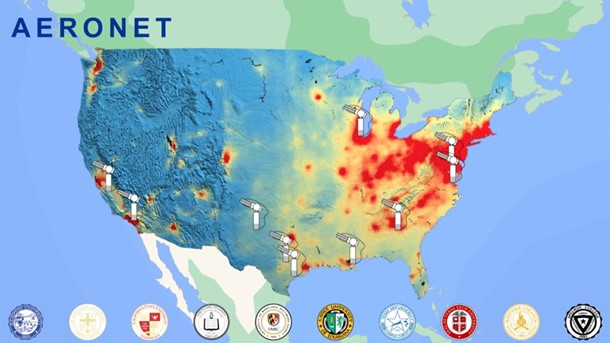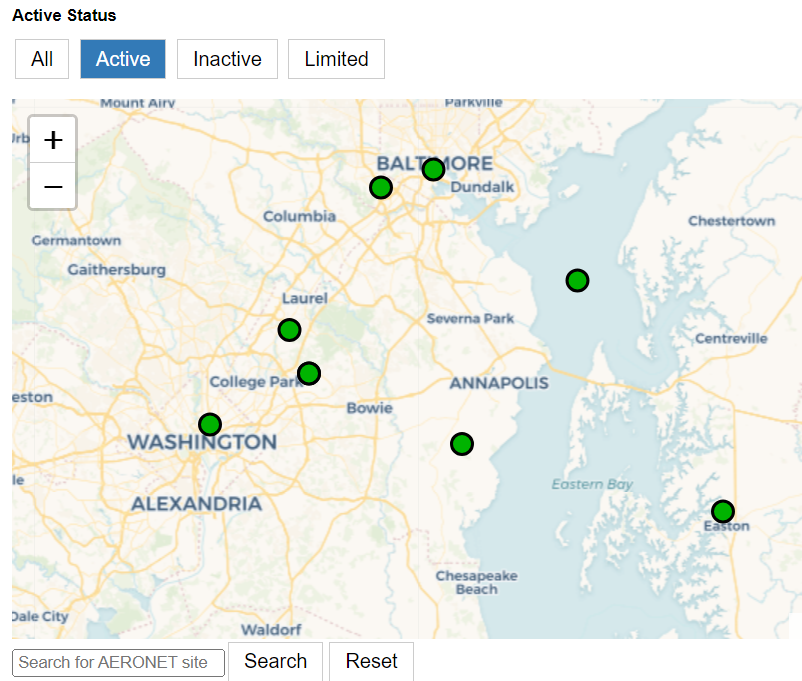
|
Greetings, fellow AERONET partners, data users, and atmospheric enthusiasts!
|
|
SAVE THE DATE - AERONET Science and Application Exchange
|
|
1 - AAQ2_SK_Suwon, Republic of Korea 2 - ARIAKE_TOWER_2, Japan 3 - Aguamara, Spain 4 - Aosta, Italy 5 - Bruz_BZH, France 6 - CASP_Watkins, Colorado 7 - Canchones, Chile 8 - Cerro_Tres_Puntas, Chile 9 - Chi_Kraeng_Station, Cambodia 10 - Chiwaukee_Prairie, Wisconsin 11 - ESP-VLC-ELPALMAR, Spain 12 - Frying_Pan_Tower, North Carolina 13 - GSFC_POLAR, Maryland 14 - Hel_IGF, Poland 15 - Howard_Univ-IRB, Washington D.C. 16 - IMPACTS_UConn, Connecticut 17 - KITcube_VS, Germany 18 - Kuching_Swinburne, Malaysia 19 - Lubbock_TTU, Texas 20 - NPU_Chicago, Illinois 21 - Neumayer3_TROPOS, Antarctica 22 - Oslo_MET, Norway 23 - Paranal_basecamp, Chile 24 - Ragged_Point_2, Barbados 25 - RdP-EsNM, Argentina 26 - Selegua_BSRN, Mexico 27 - Turlock, California 28 - UCR_Santa_Cruz, Costa Rica 29 - VCURRC_CharlesCity, Virginia 30 - WC_Whittier, California |
|
AERONET Instrumentation Upgrade
To ensure standardization of instrumentation and calibration across the entire AERONET, we continue to upgrade the older instruments to CE318-T Sun Sky Lunar photometers. We also STRONGLY encourage the owners of the older versions to upgrade them to the CE318-T version. Sites within the ACTRIS domain and directly funded to become ACTRIS national facilities are required to upgrade to CE318-T by 2025. This version has several advantages over the previous versions. It measures day (sun and sky) and night (moon). It has a more reliable robot with more accurate SUN/MOON tracking, a GPS for exact position and time, a worldwide 4-G modem for data transfer, and the possibility of UV sky measurements. But the most important advantage is that CIMEL supports it for measurement modifications and parts maintenance. Many older version parts are obsolete, and there is no way to add new measurements to the older version firmware. Calibration of the older versions is more labor-intensive and time-consuming. New developments within the network will not be transferable to the old versions. More information can be found on our main page. |
|
New AERONET Calibration Center - APAC
On Nov 2, 2023, The Asia Pacific AERONET Calibration and Training Center (APAC) joined the AERONET calibration facilities for future calibration of the instruments operated in Southeast Asia. APAC will be operated by the team led by Dr. Wang at the National Central University (NCU) with long-term support from the Taiwan Ministry of the Environment. APAC includes laboratory and repair facilities and a rooftop platform at NCU for instrument diagnostic/repairs and laboratory calibration. It also has a fully equipped platform at the remote high-altitude location (Lulin atmospheric background station, ~2862 m asl) for extraterrestrial irradiance calibration. NCU has been a long-term partner of AERONET and has extensive experience in instrumentation deployment for intensive field campaigns and routine measurements. The APAC team started their AOD transfer calibration training in April 2023. It will continue through 2024 to ensure high-quality AERONET calibration standards are met. APAC will provide operational calibration and train future regional aerosol research workforce. |
|
|
Lille AERONET Workshop
An AERONET Workshop was held at the University of Lille in France from May 22-26, 2023. The global AERONET network partners and calibration centers gathered in a week-long workshop to discuss various aspects of the AERONET program, such as network status, expansion, instrument challenges and improvements, calibration methods, data product reviews, websites and tools, and retrieval algorithms. The workshop also invited presentations from the GRASP team and Cimel Electronique. This event was organized by PHOTONS Service National d’Observation from CNRS/University of Lille. |
|
|
|
|
NASA 2022 IPMSI Addition to AERONET
In July 2022, 14 minority-serving institutions (MSI) were selected to participate in the surface-based measurement networks. The selection was based on the NASA ROSES-2021 solicitation (A.51) for "Increasing Participation of Minority Serving Institutions in Earth Science Division Surface-Based Measurement Networks." Eleven MSIs will become long-term AERONET – PGN co-located sites providing both aerosol and trace gas information to scientific, modeling, regulatory, and satellite validation communities. MSI professors and students visited NASA GSFC in September 2023 to meet in person, get trained on instrument operations, and discuss research collaboration opportunities. Participating in instrumentation installation and deployment began in May 2023 and will be completed by the summer of 2024. |
|
|
|
|
|
|
|
New Dynamic Mapping AERONET's data display and download interfaces are now mapped using Leaflet - an open-source JavaScript library to build dynamic web mapping applications. Users can now search for and filter AERONET sites based on button and dropdown selections, as well as search for a specific site without the need for page refreshing. The table of sites and URLs is dynamically updated based on active filters, user zoom level, and location. The new maps allow search by station and sorting by country and region. |
|
AERONET Data Explorer
The AERONET Data Explorer is a tool that provides an intuitive interface to interact with AERONET data. The tool allows the display of spectral aerosol optical depth (AOD) values in near-real time, as well as by daily averages, on an interactive map. Selecting a specific AOD wavelength channel, AERONET site, day/time, and mode are options. The site circle markers are color-coded based on AOD value (blue for low AOD, red for high) and active status, where sites that are inactive at the time are shown in gray. The tool also can display a time-series graph of the selected time frame and an option to view and download the data. |
|
Jupyter Notebooks
The purpose of the notebook codes is to read and map AERONET data directly from AERONET's web services. Such data includes Aerosol Optical Depth (AOD) measurements taken with different wavelengths and Angstrom Exponent parameters. The user can specify different parameters, such as geographical bounds, daily/hourly averages, wavelength, time frame, etc. The output of the codes is a geographical map with circle markers and color bars representing the average aerosol parameters on a given day or hour. Additionally, a collection of time series visualizations such as line graphs, tile plots, and calendar plots are included to track the movement and change of aerosols. A supplemental notebook is included, which provides more interactivity by displaying AERONET data using widgets. Those include sliders for date/hour and animations with control buttons. More information on how the codes work and instructions on how to run them are included in the README files on AERONET's GitHub. |
|
|
|
|
|
AERONET Quarterly Newsletter |
|
Vol. 1, 2024 |
|
For receiving updates on AERONET - subscribe to the mailing list by sending an email to |






